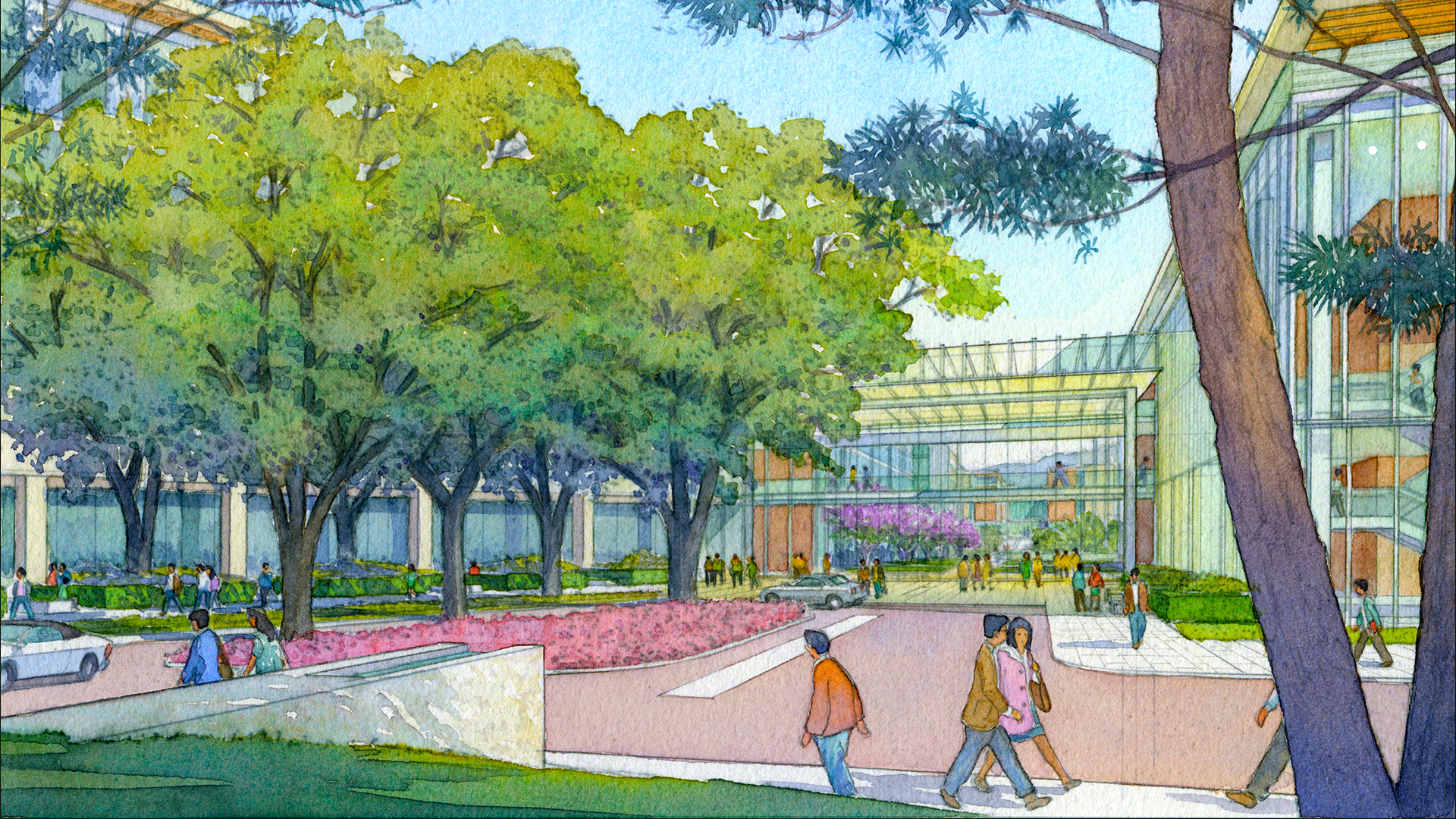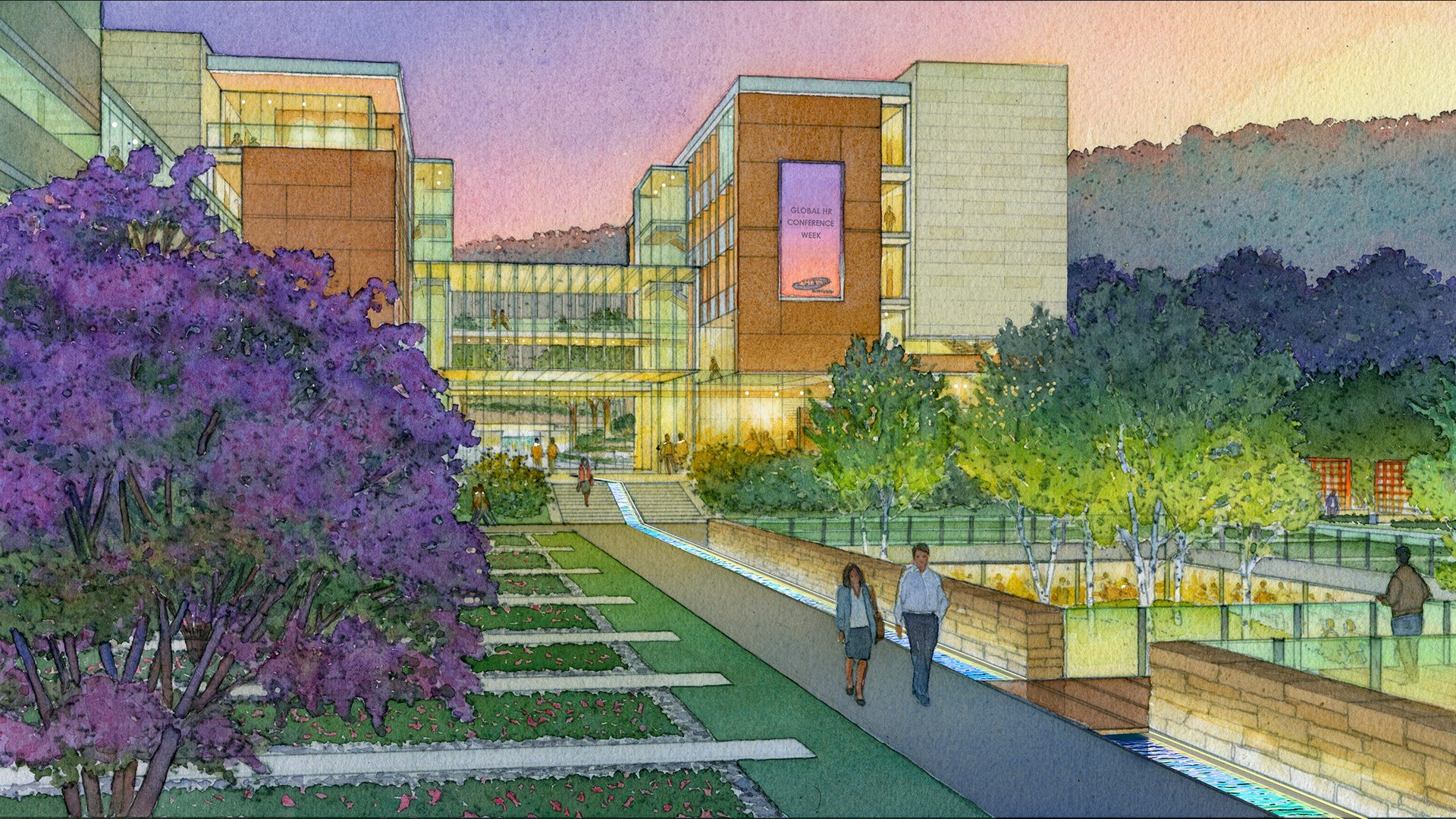DETAILS
Evolving trends in technology and the need to build a new, state-of-the-art Electronics Training Center allowed Samsung to commission the collaborative team of Samoo Architects and Thomas Balsley Associates for the design of their new facility in Keyonggi-Do Province in Korea. Essential to both Samsung and the design team was a site design solution that would be seamlessly integrated into its natural rural environment as well as foster effective sustainable strategies.
Nestled at the base of wooded hills in a natural ravine, the promontories of the training center’s site feel the warm embrace of its natural environment. The landscape concept invites the natural vegetation into the center’s perimeter edges to help blur the lines of the manmade and natural landscape. That same landscape of ravine and promontory has inspired the reinterpreted versions that are employed throughout the campus.
Metaphorical forest “fragments” strike a dialogue with the “built” landscape within. This act of replication is revealed in combination with the mounded forms and small hills that take the cue from the adjoining topography. More formalized plantings complement the landscape courtyard’s hardscape whose skeletal system expresses architectural modulations and sensibilities into a refined landscape language. As social spaces, the courtyard is dressed in more formal and sophisticated planting arrays that bring visual interest throughout the seasons.
As a central theme, the concept of water traverses the site from east to west as an organizing site element. Taking different forms with different purposes, water is embedded into the campus landscape concepts. The most meaningful and powerful expression is that of the “mountain stream” or rill. As one might expect of a ravine, the stream is the connective link between the hills and their valleys and the behind world. The strength of its straight-line geometry and the accompanying light effects will become one of the most provocative and memorable aspects of a visit or stay on campus. At each subtle change in outdoor elevation, the water’s effects are diversified, sometimes for visual and sometimes for audio effects.
UC Davis West Village
UC Davis West Village is a new 225-acre development in Davis, California, that responds to a substantial growth in the number of students, faculty and staff living on the University’s campus. The city of Davis is a unique and cherished community, and great care was taken throughout the design and planning process to pay homage to its history and culture. The n...
Public Safety Answering Center
The landscape is a key component of the PSAC II site. This new five hundred million dollar emergency call center is strategically located in the Bronx, New York and will facilitate emergency response for the City of New York.
An earthern grassland berm completely envelops PSAC II’s architecture and establishes a visual connection between PSAC II and the...
SUNY Albany Uptown Campus
With great respect for Edward Durrell Stone’s 1960s modernist campus, this new master plan redefines the campus’ first impression image and reclaims quads as new venues for an enhanced campus lifestyle. The entry drive encounters a new Collin’s Circle, now raised to the level of the entrance plaza. The earthen plinth engages the plaza entry at the new Ad...
Tampa Museum of Art
The new Tampa Museum of Art by Stanley Saitowitz is set within the city’s arts district whose master plan was prepared by Thomas Balsley Associates and also includes Performing Arts Center, Children’s Museum, Riverwalk, and the centerpiece Curtis Hixon Park. The museum is dramatically sited on a plinth overlooking its companion park and the Hillsborough River....






